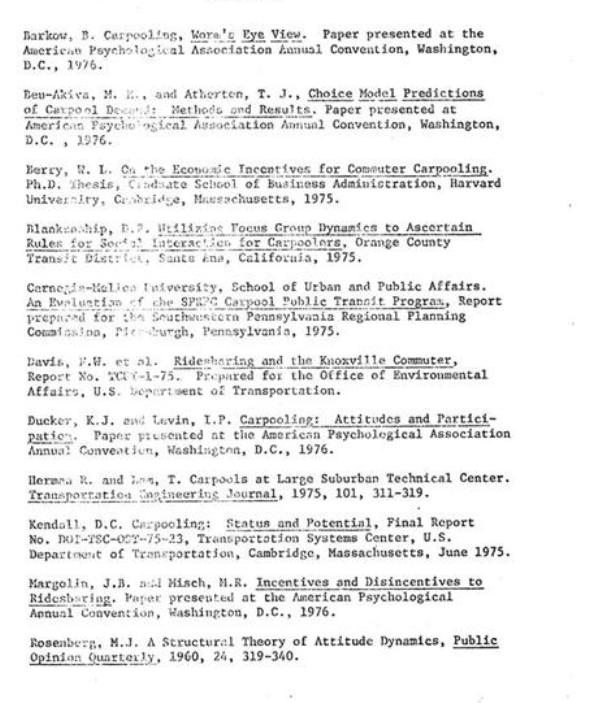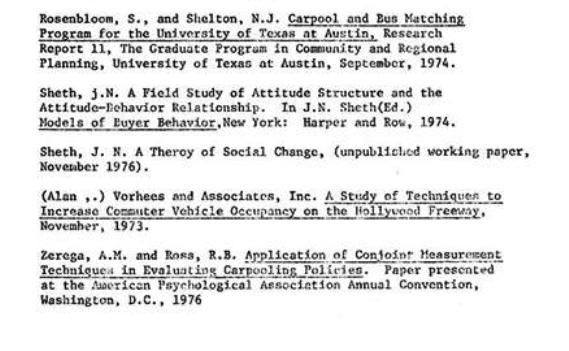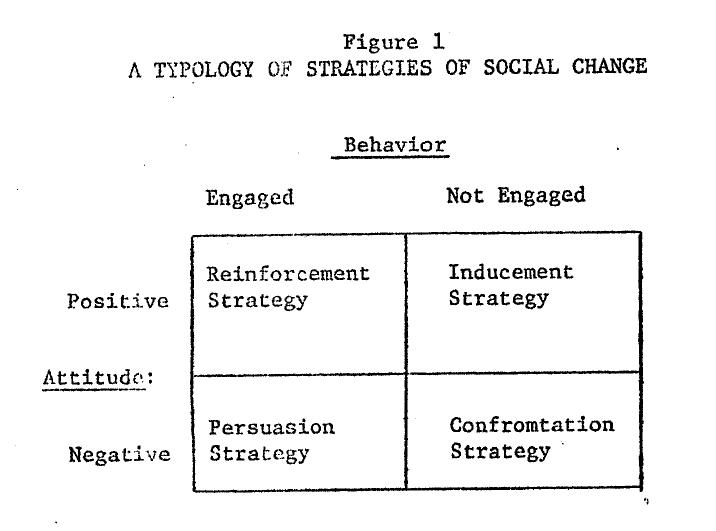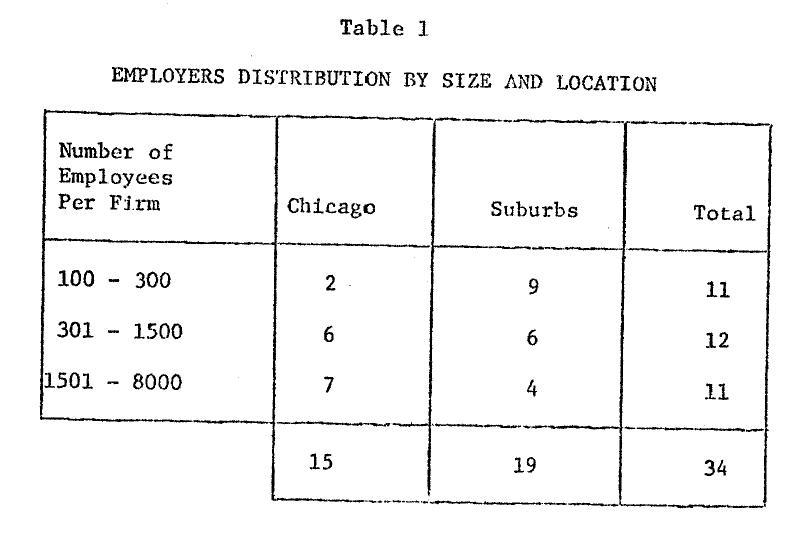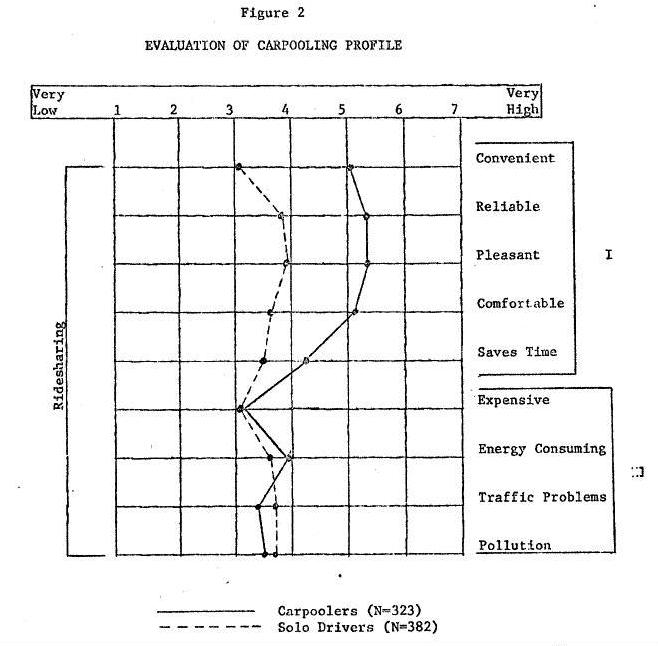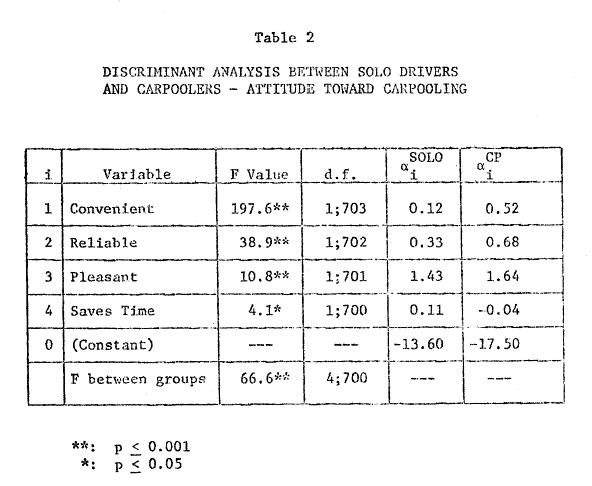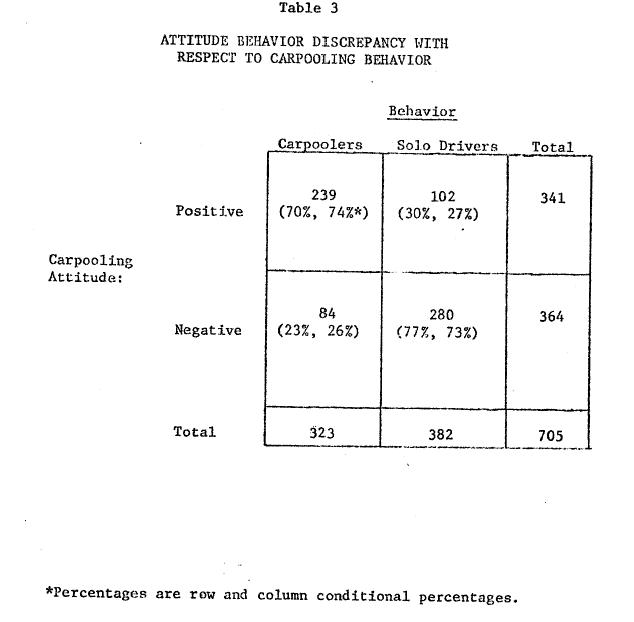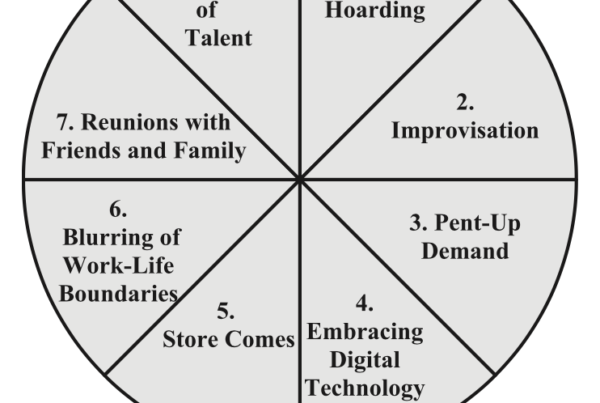By Jagdish N. Sheth, University of Illinois & Abraham D. Horowitz, General Motors
This paper represents an application of a theory of social change (Sheth, 1976) to the area of increasing carpooling (ride— sharing) behavior among urban commuters. The paper at first briefly describes alternative strategies of changing social behavior as proposed by Sheth (1976). Then, an empirical Study carried Out in the metropolitan Chicago area is described. Finally, various strategies for target segments are proposed as a comprehensive plan with which policy makers can increase carpooling (ridesharing) behavior.
A Framework for Social Chance
The fundamental axiom underlying Sheth’s theory of social change is the concept of attitude—behavior discrepancy. While in some situations and for some people attitudes and behavior coincide or perfectly correlate with each other, there are several other circumstances in which people’s attitudes and behavior tend to be at odds with each other. For example, many people possess very positive attitudes to.ard highway safety and speed limits but their actual driving behavior tends to be contrary. Similarly, some people may be currently engaged in using public transit systems such as a bus or subway out of necessity even though they do not enjoy it. Finally, of course, there are situations in which attitudes and behavior coincide for most people. In other words, people engage in a particular behavior, not simply out of necessity but also because they enjoy it, and avoid some other behavior because they don’t enjoy it.
Eased on this simple axiom of attitude—behavior discrepancy, Sheth (1976) has suggested the following grid of alternative strategies of social change.
The conceptual framework suggests four major alternative strategies of social change which a policy maker can choose depending upon the degree and direction of attitude—behavior discrepancy prevalent in a given Social phenomenon.
Reinforcement Strategy: When attitudes and behavior are consistent as well as in the positive direction coward the phenomenon, the strategy of reinforcement is most appropriate for sustaining social change. It refers to providing both psychological and economic rewards to people engaged in the social behavior for continuing and sustaining it. For example, those who believe and engage in defensive driving or in obeying speed limits should be rewarded, at least psychologically, by offering them safety citations and merit certificates to ensure that the strength of consistency between attitude and behavior does not decay by natural processes or to ensure that it is not destroyed by newer and competitive alternatives.
Inducement Strategy: When people possess positive attitudes but do not or cannot engage in the concomitant behavior, the Strategy of inducement is most relevant to a policy maker. It refers to minimizing or removing organizational, socioeconomic, time and space hurdles that mediate between positive attitudes and its manifestation into the desired behavior. Alternatively, it can also involve providing economic incentives to the people as trade off for those hurdles. For example, many people have positive attitudes toward public transportation but do not use it because of accessibility hurdle or because it is socially negative for them to engage.
Persuasion Strategy: It is most appropriate when people are currently engaged in a social behavior but they have negative attitudes toward it. Often, this is due to lack of choice or temporary situation people face. For example, someone may ride a bus for a few days while his car is being repaired or people take public transportation because of parking problems at the place of work.
Persuasion strategy refers to utilization of mass communication and propaganda principles with which to package information in a biased way in favor of the social behavior. Often, this entails partial disclosure of facts, exaggeration of positive aspects, and minimization of negative aspects. An alternative to biased communication is the offering of economic incentives for a person to continue engaging in behavior. Both psychological and economic strategies are meant to help rationalize his behavior.
Confrontation Strategy: When both attitude and behavior are consistent but in the negative direction toward a desirable social phenomenon, the strategy most appropriate is confrontation strategy. This is the most difficult and painful process of social change. The policy maker must, therefore, first think of using it only while the appropriate attitude—behavior conditions are presort. Second, he must decide whether it is worth the effort to change social behavior based upon external analysis of social benefits and coats associated with this strategy.
If the decision is in favor of bringing about social change through confrontation strategy, the policy maker has two distinct avenues of change. The first avenue involves people’s unlearning or unfreezing of old habits, and learning of new attitudes and behavior. This is often referred to as relearning experiences. For example, with educational efforts and use of clinical therapy in extreme cases, people can be motivated to break the old habits of violating traffic laws in general. The second avenue requires the policy maker to utilize his power position and create blockades toward the existing behavior as well as rechannel people’s motivations toward the socially desirable course of action. For example, the government can ban gas-guzzler cars or prohibit driving through the central business districts of metropolitan areas in order to minimize energy and traffic problems. This second avenue is called rechanneling strategy. It can take many forms such as mandatory rules, social disapproval and economic disincentives, all of which act as blockades to current behavior and at the same time use of economic incentives, social approval and mandatory rules to motivate people to channel their desires toward the socially desirable behavior.
How to allocate resources among alternative strategies of social change and whether a single strategy will be sufficient or not depend on the distribution of population in the four cells of Figure 1. It is seldom that we find a strong homogeneous pattern of attitude-behavior discrepancy that will produce a very lopsided concentration of people in any one cell. The more heterogeneous the cultural and economic backgrounds of people, the less is the probability of obtaining a lopsided distribution with respect to a social phenomenon. More commonly, people tend to be distributed in sufficient numbers in all the four cells which suggests that the policy makers must simultaneously utilize several strategies of social change. Furthermore, if there are no differential coefficients of effectiveness as well as constraints associated with each strategy, the optimal allocation is, of course, proportional to the population concentrations in the four cells.
Analytical Framework
It is therefore essential to estimate population proportions for resource allocation decisions and for choosing strategies of social change. Sheth (1976) has proposed two procedures. The first one relies on unidimensional measures of attitudes such as like-dislike, enjoy-hate, favorable-unfavorable evaluations. If it is measured on an interval scale, he suggests the utilization of normalized scores to break the sample into positive and negative attitude segments. However, it is much better to collect only binary attitude data from respondents so that there can be no need for subjective breakdown of attitude scale into positive and negative segments.
Alternatively and more realistically. Sheth has proposed that attitudes should be measured with respect to the underlying evaluative beliefs which provide a cognitive profile for the overall attitude. These can be measured on either interval scale or on a binary judgment.
Similarly, behavior should be measured in terms of people either engaged in the desired social behavior or engaged in any of its alternatives. For example, in this study of carpooling behavior, it would be appropriate to utilize carpoolers and solo drivers as segments to represent social behavior under study. In some cases it might be necessary to study the degree of behavior manifested. In that case, the behavior measure can be a ratio-scaled quantitative measure which can be divided into Hi-Lo categories with the use of normalized scores.
The analytic framework suggests the use of a two-group or multiple group discriminant analysis in which the groups are defined by the behavior engaged in as well as its alternatives and the predictor variables are the cognitive evaluative beliefs of each group with respect to the social behavior under study. For example, we can use carpoolers and solo drivers as two groups and each group’s evaluation of carpooling on a set of criteria as the predictor variables.
Since the objective of discriminant analysis is to maximize the correlation between group membership and predictor variables, it is possible to measure the degree and direction of consistency between attitudes and behavior classification. Furthermore, one can easily classify the total sample into the four attitude behavior discrepancy groups as described in Figure 1. It is the use of the predictive classification procedure in discriminant analysis which enables us to calculate the optimal population proportions in each of the four cells of attitude-behavior discrepancy grid. The analytic framework will become more meaningful later on when we discuss the application of the Sheth model to carpoollng behavior.
Carpooling Problem
Carpoollng as a commuting alternative gained significance in the U.S. as a consequence of energy crisis. However, there were many latent factors which indicated that carpooling may be a useful substitute tor solo driving. First, carpooling is juxtapositioned between mass transit and personal mode of commuting to work. As such, it has fewer of the disadvantages of mass transit systems. At the same time, the vehicle is the same and, behavior could be easily transferred from solo driving carpooling. Second, carpooling provides significant benefits to the solo driver with respect to less cost, and less parking and other related daily activities, Finally, carpooling can provide significant social benefit with respect to reduced traffic congestion, highway accidents and pollution of the environment. The energy shortage conservation added marginally significant for social researchers to examine the feasibility of increasing carpooling behavior.
Despite powerful personal and social advantages, carpooling has received very less acceptance in the U.S. It is estimated that even after the national pull to increase carpooling behavior, less than ten percent of the commuters use carpooling as a mode of travel to work. Vast majority of people still continue solo driving. This has generated some intrigue and research studies in recent years. The studies deal with a variety of carpooling aspects including (a) measuring travel patterns of carpoolers (b) ridesharing matching (Berry, 1975; Davis, et al. , 1975; Kendall, 1975; Rosenbloom and Shelton, 1974) ; (c) providing economic incentives to switch to ridesharing (Ben- Akiva and Atherton, 1976; Margolin and Misch, 1976; Zerega and Ross, 1976); (d) clinical and social psychological aspects (Blankenship, 1975; Barkow, 1976); and (e) use of attitudes to measure potential carpoolers (Alan M. Voorhes Associates, 1973; Carnegie-Mellon University, 1975; Ducker and Lewin, 1976).
Many of these studies are very useful with respect to accumulating knowledge about current realities of carpooling behavior. However, they often do not provide any strategic implications nor enable the policy makers to choose a specific strategy with which to increase carpooling behavior. Hence a study was conducted based on the conceptual and analytical framework proposed by Sheth (1976).
Data
A survey was conducted among residents of the Chicago metropolitan area contacted through their employers. The main reason for choosing Chicago as the site of the data collection was that it offers a wide variety of businesses both in terms of type and size in both the city and its suburbs and a variety of public transit services.
Personnel departments of 43 firms, chosen randomly from a large list of companies that employ at least 100 people, were first contacted. Table 1 summarizes the distribution by size and location of employers who expressed their willingness to participate. About 60% of these firms are manufacturing companies, while the others are distributors, insurance companies, and other types of organizations. Personnel departments were asked to contact roughly equal numbers of carpoolers, solo drivers, and public transit users to answer a self-administered mail back type questionnaire but hand delivered. During the fall and winter of 1975 two thousand questionnaires were distributed of which 1020 questionnaires were returned. After eliminating questionnaires with a large amount of missing data, 822 questionnaires remained for analysis: 323 carpoolers, 382 solo drivers, and 117 public transit commuters.
Since in this sample virtually all carpoolers owned at least one car while 75% of transit users did not own cars it was assumed that car ownership is a necessary condition for sharing a ride to work. It was decided, then, to analyze data relating to carpoolers and solo drivers only.
The method of contacting commuters through their employers (a method seldom used in transportation research) proved to have certain advantages over the traditional methods of data collection. First, the rate of return was relatively high (about 50%) compared to mail surveys. Second, the cost for data collection was smaller than that required for home-interviews.
Three types of information were collected in the survey: travel behavior and characteristics, socioeconomic-demographic profiles of the respondents, and attitudes toward carpooling in terms of cognitive evaluative beliefs.
Figure 2 shows the specific evaluative beliefs utilized in the study. They were developed based on past literature, in-death interviews with a group of carpoolers as well as our thinking. It also shows the profiles of carpoolers and sole drivers with respect to their attitudes toward carpooling.
As can be seen from the profile, the attitudes toward carpooling between solo drivers and carpoolers are remarkably similar and negative with respect to expense, energy, traffic and pollution. On the other hand, carpoolers are more positive than solo drivers carpooling with respect to beliefs related to convenience, reliability, comfort, pleasant and saving of time.
A two-group discriminant analysis was performed utilizing the above cognitive profile as the predictor variables. The discriminant analysis results are summarized in Table 2.
As would be expected, those beliefs on which there were significant differences between carpoolers and solo drivers (convenient, reliable, saves time) retained in discriminant function and the others discarded as not relevant since they did not contribute maximizing the correlation between behavior and attitudes of two groups of commuters.
Since solo drivers on the average have negative attitudes toward carpooling with respect to the discriminating beliefs carpoolers have positive attitudes, it is possible to utilize the attitude profile of a commuter and match it with his travel behavior. In the process, we should be able to infer that those commuters with positive attitudes should be predicted as carpoolers, and those with negative attitudes as solo drivers regardless of what they actually do. Then, we can examine the frequency of attitude-behavior consistency versus discrepancy by matching what we predict with the actual carpool or solo driving behavior.
This type of predictive classification was performed utilizing the classification procedures of discriminant analysis. The results are shown in Table 3.
As can be seen from the Table, vast majority of people with positive attitudes toward carpooling (70 percent) do actually engage in that behavior. Similarly, a vast majority of people with negative attitudes toward carpooling actually engage in solo driving (77%) . It therefore suggests that primary strategies for increasing carpooling behavior should be a combination of reinforcement and confrontation strategies. While our data with respect to carpoolers versus solo drivers are not proportional to the population ratios, it will be necessary to statistically estimate the population proportions of carpoolers. Given the fact that carpooling is practiced by less than ten percent of the population, it is obvious that the dominant strategy for increasing carpooling behavior must be the confrontation strategy.
However, as we have stated before, confrontation strategy is both very difficult and painful to practice since it requires some fundamental changes in both values habits of people. As an alternative, it is possible to make modest improvements in carpooling behavior by concentrating on those people with positive attitudes but do not at present carpool (30 percent of all positive attitudes), as well as on those who do carpool at present but they have negative attitudes toward carpooling (26 percent of all those who at present carpool). The former group would require inducement strategy such as change in work schedulers, providing a vehicle exclusively for carpooling purposes, and facilitating the matching process of carpoolers to minimize time and distance inconveniences. The latter group would need persuasion strategy such as propaganda leaflets, national pride, and special Interpersonal support to rationalize their behavior.
In short, the dominant strategy is confrontation strategy. If we presume that 75 percent of all commuters are solo drivers (the balance divided between carpooling and mass transit), then nearly 55 percent of all commuters (75 percent x 73 percent) will need more drastic measures strategies to motivate them to change to carpooling behavior. Additional 20 percent (75 percent x 27 percent) will need inducement strategy, and the balance of 25 percent of ail commuters will require a combination of reinforcement and persuasion strategy. Looking at this from a different perspective, it suggests that with the adoption of reinforcement, persuasion and inducement strategy, the policy maker should be able to increase carpooling behavior to a level where it will, combined with mass transit, have a market share of it’s percent of all commuters. In other words, solo driving and other modes of commuting to work can be brought to a more or less parity level without the utilization of confrontation strategies.
References
